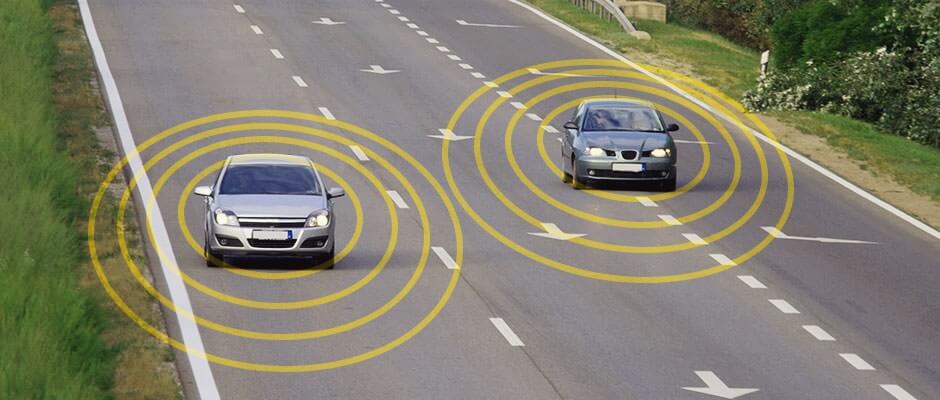The Connected Car is the buzz word on the street right now, the talk of the motor industry, but what is a Connected Car and why should we care? As we’ve previously mentioned in our Autonomous Car blog, there is a lot of jargon surrounding the latest technological developments in cars, creating puzzlement and blank faces. So the purpose of this blog is to give you a simple guide to the Connected Car, hopefully resulting in some light bulb moments.
First, let’s lay it on the line. When we say that a car is ‘Connected’, this simply means that the car has internet access and usually WLAN (Wireless Local Access Network, more commonly referred to as wifi). As Wikipedia puts it, ‘This allows the car to share internet access to other devices both inside as outside the vehicle’¹. The way I understand it, anything that puts your car in touch with the outside world means it’s ‘Connected’.
The Connected Car is being hailed as the car of our future, set to change the face of the motor landscape forever. Technological developments in the Connected Car are advancing at breakneck speed and manufacturers, mobile telecoms operators, software providers, internet companies, app creators and developers are all clamouring for a piece of it.
What Connected Car technologies are available?
So let’s think about the technologies that already exist which make our cars ‘Connected’. At the most basic level, a hands free set in your car, means that it is ‘Connected’. But a Connected Car is much, much more than this. Also in the ‘Connected’ category are telematics boxes – where a black box is installed in your car and relays information about how you drive via GPS satellites. Theft trackers to help locate your car if it is stolen and crash or accident alert, whereby your car calls the emergency services for help in the event of a crash, are also Connected Car technologies. In some cars consumers can, through the car’s on-board computer, connect to a range of in-car entertainment such as Spotify, Google searches, restaurant bookings, newsfeeds and even concierge services.
GM offers an app which can remotely unlock your car doors, sound your horn, turn off the lights, start the car, locate it and monitor fuel and oil levels. It also offers ‘Remote Ignition Block’, whereby once a car has been reported stolen, its OnStar system sends a signal to block the engine from starting, stopping the thief in his tracks. It can also send a Stolen Vehicle Slowdown signal to the car to gradually slow it down, if it’s been reported stolen, to prevent high speed chases.

Driver distraction
It’s interesting to consider that using a mobile phone behind the wheel was made illegal 11 years ago in the UK, but as we speak technology is being developed which will turn our cars into the equivalent of mobile internet cafes and this technology will require human interaction in order to function. There is an ever growing appetite for more and more in-car technology at the consumer’s fingertips. I’m no killjoy, but have we thought through the safety implications of having so much interactive technology in our cars? If we know that texting at the wheel can cause greater driver distraction than using drink or drugs² then how much more distracted could drivers get by a plethora of additional in-car technology? It’s unclear what, if any, legislation exists around the Connected Car. It’s quite possible we’re all getting a little carried away with all the excitement, but we need to ensure that government ensures acceptable safety standards are put in place before technological developments continue unabated at the expense of driver safety.
Cost
And what about the cost? One of my burning questions is, how much will all this newfandangled technology cost and do we even want it? I can’t deny that the thought of my car being able to ask my fridge if I need to buy milk fills me with huge excitement, but I’m not sure I want it right now. And I’m not sure I’d be prepared to pay extra for it, I’d probably expect it to come as standard.
What’s clear is that to ignore the quickening heartbeat of the Connected Car would be like trying to swim against an oncoming tide. Futile.
Sources:
[1] http://en.wikipedia.org/wiki/Connected_car
[2] http://www.iam.org.uk/images/stories/policy-research/PPR592_secure.pdf
